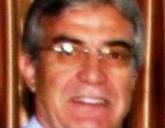Citation:
Arapoglou V, Kondi-Pafiti A, Rizos D, Kotsis T, Kalkandis C, Katsenis K. The influence of total plasma homocysteine and traditional atherosclerotic risk factors on degree of abdominal aortic aneurysm tissue inflammation. Vascular and Endovascular Surgery. 2009;43(5):473 - 479.
Abstract:
Objective: Modulating effects of genetic and environmental risk factors on severity of human abdominal aortic aneurysm (AAA) tissue inflammation remain unclear. We investigated the influence of total plasma homocysteine (tHcy) and traditional atherosclerotic risk factors (ARF) on degree of AAA tissue inflammation. Methods: Aneurysm specimens were obtained from 89 male patients aged 52 to 83 years, underwent asymptomatic not ruptured AAA (mean diameter 5.5 cm) open repair and graded for degree of histologic inflammation. Multivariate analysis was used to determine the association of tHcy and ARF, with degree of inflammation. Results: Current cigarette smoking, odds ratio (OR) 4.4, 95% confidence interval 1.3 to 15.2, P =.01 and no other ARF, neither tHcy levels OR 0.9 (0.9-1.02), P =.2 were associated with high-grade tissue inflammation. Conclusion: These results provide evidence against a major effect of tHcy levels on AAA tissue inflammation, while current cigarette smoking is a significant modulating factor.
